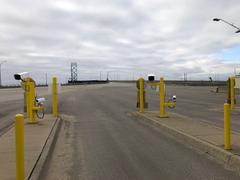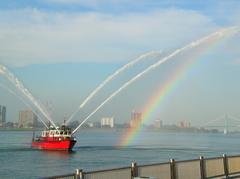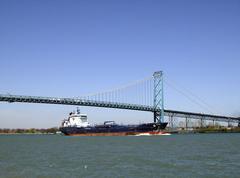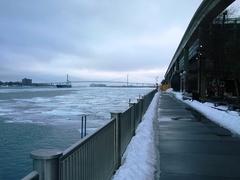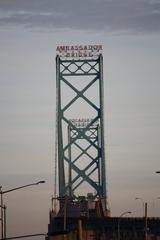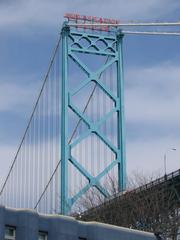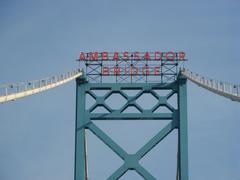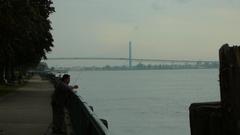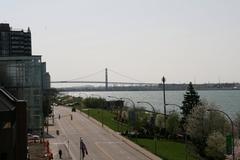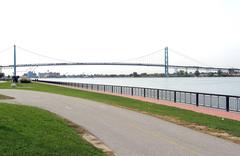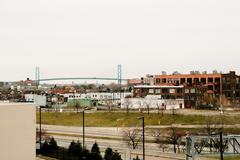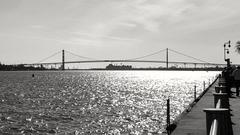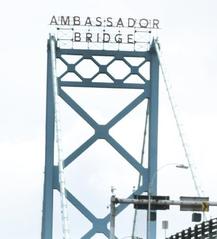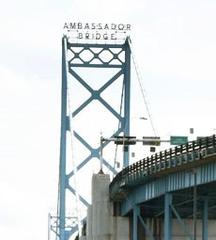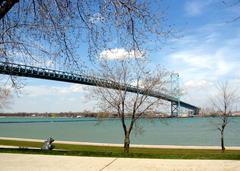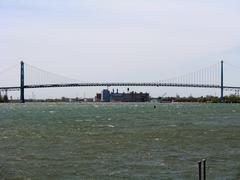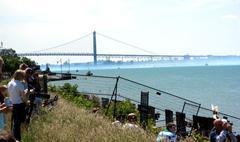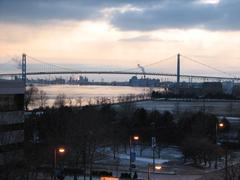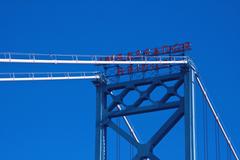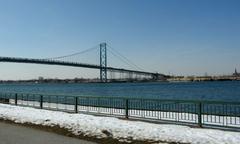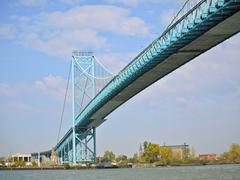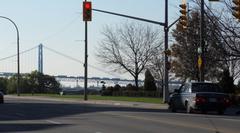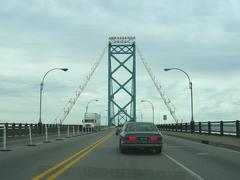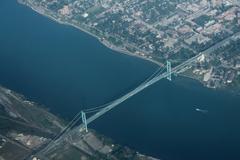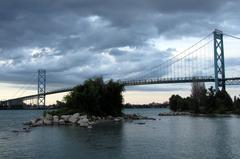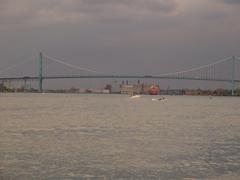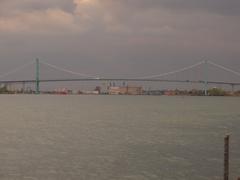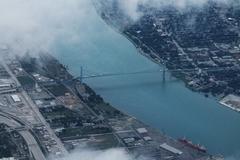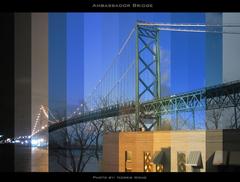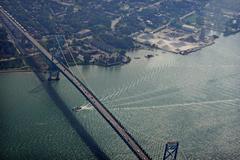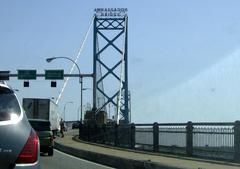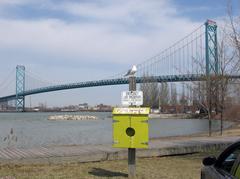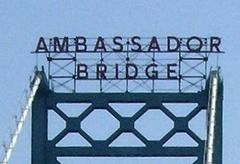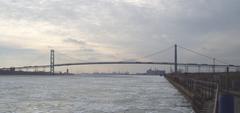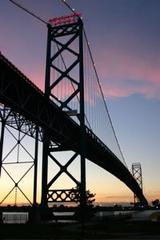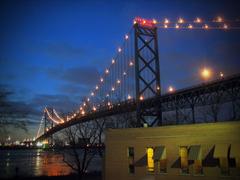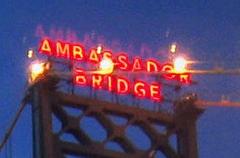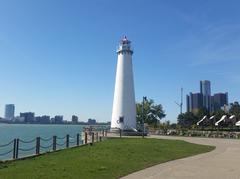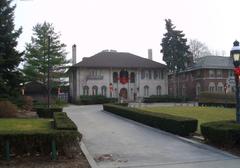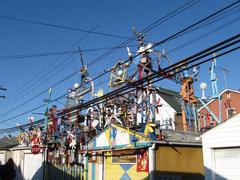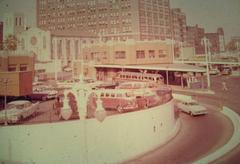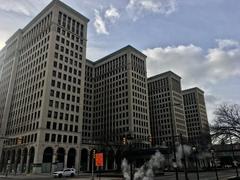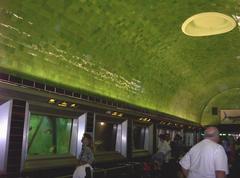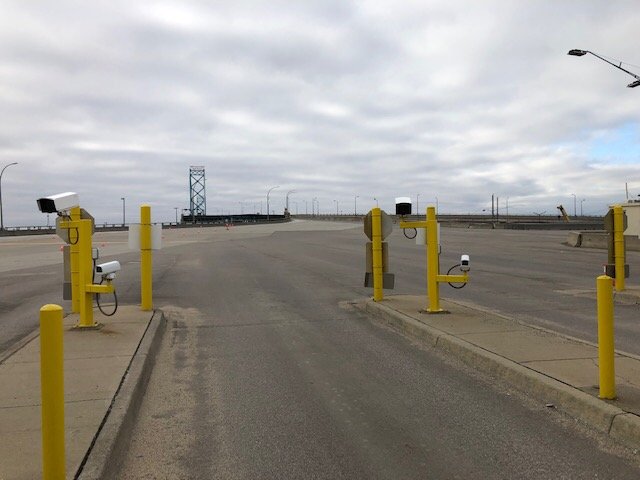
Comprehensive Guide to Visiting the Ambassador Bridge
Date: 18/07/2024
Introduction
The Ambassador Bridge, a towering steel structure linking Detroit, Michigan, to Windsor, Ontario, is more than a mere crossing over the Detroit River. It stands as a monument of historical significance, a marvel of engineering, and a critical artery for international trade and travel. Conceived in the late 19th century and actualized in the early 20th century, the bridge symbolizes the enduring partnership between the United States and Canada (source). This comprehensive guide explores the fascinating history, cultural importance, and practical visitor information for this iconic landmark.
Constructed during an era of rapid industrial growth, the Ambassador Bridge was a response to the burgeoning need for efficient transportation links between the two nations. The bridge’s story is intertwined with the economic, social, and political developments of the region, making it a crucial part of both Detroit and Windsor’s heritage. Its role has evolved over time, from a vital wartime supply route to a modern-day symbol of cross-border cooperation (source).
Today, the Ambassador Bridge remains one of North America’s busiest international border crossings, handling approximately 25% of all merchandise trade between the U.S. and Canada. Its significance extends beyond commerce, fostering cultural exchanges and tourism between the neighboring cities. This guide aims to provide an in-depth look at the bridge’s historical context, visitor essentials, and its future in the face of modern challenges (source).
Table of Contents
- Introduction
- Early 20th Century - A Vision for Connection
- The Birth of an Icon - Construction and Opening
- A Lifeline During Wartime - The Bridge’s Role in World War II
- Post-War Prosperity - A Symbol of Trade and Progress
- Challenges and Controversies - The Modern Era
- Visitor Information - Tickets, Hours, and Travel Tips
- Nearby Attractions - Exploring Detroit and Windsor
- Accessibility and Safety
- The Ambassador Bridge Today - A Vital Link with an Uncertain Future
- Conclusion
- FAQ
Early 20th Century - A Vision for Connection
The idea for a bridge spanning the Detroit River first emerged in the late 19th century, driven by Detroit’s burgeoning industrial might and the increasing need for efficient transportation between the United States and Canada. However, the technological challenges and financial risks associated with such an ambitious project delayed its realization.
It wasn’t until the early 20th century that the vision began to solidify. In 1919, a group of prominent Detroit businessmen, led by Joseph A. Bower, formed the Detroit River Bridge Company with the goal of constructing a suspension bridge across the river.
The Birth of an Icon - Construction and Opening
After securing funding and overcoming numerous engineering hurdles, construction on the Ambassador Bridge commenced in 1927. The project was a marvel of its time, employing thousands of workers and utilizing innovative construction techniques.
The bridge’s design, spearheaded by renowned bridge engineer Joseph B. Strauss, who would later gain fame for his work on the Golden Gate Bridge, featured a central span of 1,850 feet (564 meters) – an impressive feat for the era.
On November 11, 1929, amidst much fanfare, the Ambassador Bridge officially opened to traffic. The grand opening ceremony was a testament to the bridge’s significance, attracting dignitaries and spectators from both sides of the border. The bridge was initially tolled at 50 cents per car and $1 per truck, a significant sum at the time.
A Lifeline During Wartime - The Bridge’s Role in World War II
The Ambassador Bridge’s strategic importance became evident during World War II. As a vital link between the industrial heartland of the United States and the Allied forces in Europe, the bridge facilitated the transportation of essential war materials, troops, and supplies.
During the war, security on the bridge was heightened significantly. Military police patrolled the bridge around the clock, and vehicle inspections became commonplace. The bridge’s role in supporting the war effort solidified its status as a critical infrastructure asset.
Post-War Prosperity - A Symbol of Trade and Progress
Following the war, the Ambassador Bridge continued to play a pivotal role in the economic prosperity of the region. The post-war economic boom led to a surge in cross-border trade, and the bridge served as a conduit for the flow of goods and services between the United States and Canada.
The bridge’s impact extended beyond economics. It fostered cultural exchange and tourism, connecting communities and strengthening the bonds between the two nations. The Ambassador Bridge became a symbol of progress and international cooperation.
Challenges and Controversies - The Modern Era
In recent decades, the Ambassador Bridge has faced its share of challenges and controversies. The aging structure has required ongoing maintenance and upgrades to keep pace with increasing traffic volumes and modern safety standards.
Furthermore, the bridge’s ownership has been a source of contention. The bridge is privately owned by the Moroun family, who have been embroiled in legal battles with both the Canadian and U.S. governments over various issues, including the construction of a competing bridge.
Visitor Information - Tickets, Hours, and Travel Tips
For those planning a visit, the Ambassador Bridge is open 24 hours a day, 7 days a week. Tolls vary depending on vehicle type, with current rates available on the bridge’s official website. Visitors should check for any travel advisories or maintenance schedules before planning their trip.
Nearby Attractions - Exploring Detroit and Windsor
While visiting the Ambassador Bridge, consider exploring nearby attractions. In Detroit, historical sites like the Detroit Historical Museum and the Motown Museum offer rich cultural experiences. Across the river in Windsor, the Windsor Sculpture Park and the Canadian Club Brand Center provide unique insights into the region’s heritage.
Accessibility and Safety
The Ambassador Bridge is committed to accessibility and safety. The bridge features designated lanes for commercial and passenger vehicles, and regular inspections ensure it meets modern safety standards. Travelers should adhere to posted speed limits and be prepared for potential delays during peak travel times.
The Ambassador Bridge Today - A Vital Link with an Uncertain Future
Today, the Ambassador Bridge remains a vital artery for international trade and travel. It handles approximately 25% of all merchandise trade between the United States and Canada, with millions of vehicles crossing its span annually.
However, the bridge’s future remains uncertain. The ongoing debate over its ownership, coupled with the need for significant infrastructure investments, has fueled discussions about the construction of a new, publicly owned bridge.
Despite these challenges, the Ambassador Bridge stands as a testament to human ingenuity and the enduring power of connection. Its legacy as a symbol of international cooperation and economic prosperity continues to shape the landscape of the region.
Conclusion
The Ambassador Bridge is more than just a physical structure; it is a symbol of the enduring ties between Detroit and Windsor. As you explore this iconic landmark, consider the historical significance and future challenges it faces. For more information, visit the bridge’s official website or follow us on social media for the latest updates.
FAQ
Q: What are the visiting hours for the Ambassador Bridge?
A: The Ambassador Bridge is open 24 hours a day, 7 days a week.
Q: How much are tickets for the Ambassador Bridge?
A: Tolls vary depending on the type of vehicle. Current rates can be found on the bridge’s official website.
Q: Are there any nearby attractions to visit?
A: Yes, in Detroit, you can visit the Detroit Historical Museum and the Motown Museum. In Windsor, consider stopping by the Windsor Sculpture Park and the Canadian Club Brand Center.
Q: Is the Ambassador Bridge accessible for all vehicles?
A: Yes, the bridge has designated lanes for commercial and passenger vehicles and meets modern safety standards.
References
- Exploring the History and Significance of the Ambassador Bridge - A Vital Link Between Detroit and Windsor, 2024, Author source
- Exploring the Ambassador Bridge - History, Significance, and Visitor Information, 2024, Author source
- Essential Visitor Tips for the Ambassador Bridge - Hours, Tickets, and More, 2024, Author source
